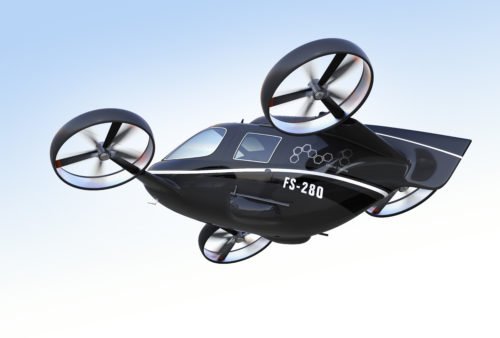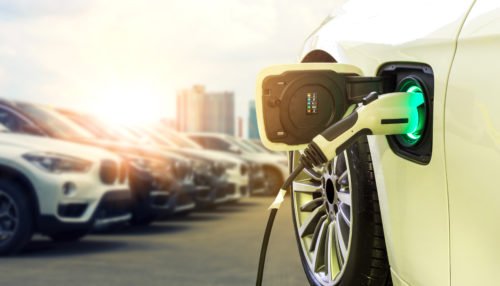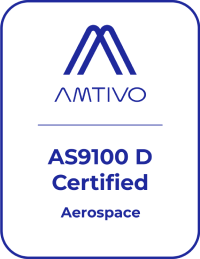What’s Happening With E-Mobility and E-Propulsion in 2021?
The effect of global warming is ever more visible today. Industries around the world are ramping up the urgency to deliver sustainable solutions. There is a strong focus in electrification of transportation, and the technological advancements in greener power generation methods and the distribution infrastructures.
Evidence of this global shift to sustainability can be seen in the ambitious goals made by leading manufacturers and governments globally. For example, General Motors recently vowed to end producing fossil fuel-dependent vehicles by 2035. Leading eVTOL (electric vertical take-off and landing) companies are planning on launching air-taxi services as soon as 2023, and in 2020 the United Kingdom announced it would ban fossil fuel vehicles beginning in 2030.
What Key Insights Are We Seeing in E-Mobility and E-Propulsion?
Within the next decade, the widespread adoption of hydrogen fuel cell and battery-powered electric vehicles (EV) will likely occur. While automotive companies are at the forefront of electric vehicle adoption, aerospace companies are also developing proprietary technologies behind the scenes, and many of their smaller-scale prototypes are yielding promising results.

Leading automakers are currently producing more EV models than ever before, with approximately 400 new battery-powered vehicles expected to hit the market by 2025. At the same time, leading eVTOL (electric vertical take-off and landing) companies are certifying new vehicles with the FAA/EASA in preparation for a commercial service rollout as early as 2023.
The incumbent aerospace OEMs are beginning to reveal their hybrid e-propulsion and long to mid-range electric passenger aircraft concepts, and are working towards 2030 release timeline. According to a recent MarketsandMarkets forecast, by 2023 the electric aircraft market is expected to reach $122 million, which represents a compound annual growth rate of 4%. Meanwhile, UBS predicts that the electric aviation market will reach $178 billion by 2040 after experiencing a robust growth period due to the expected release of the first hybrid electric 50-70 seat aircraft around 2028.
What Are the Benefits of E-Mobility and E-Propulsion?
While their prevalence is steadily decreasing, internal combustion engine (ICE) vehicles are currently responsible for approximately 60% of the world’s air pollution. The potential environmental benefits from removing these vehicles from the road have already been demonstrated during the global COVID-19 lockdown when air pollution levels rapidly decreased.
 To combat the global warming, electrifying the cars and airplanes are not enough. We must think of a way to make the whole energy supply chain green. Starting from how we generate fuel (or energy), transport and distribute it, and eventually how the byproduct of the fuel impacts the environment – the new greener supply chain must be a sustainable close-looped cycle.
To combat the global warming, electrifying the cars and airplanes are not enough. We must think of a way to make the whole energy supply chain green. Starting from how we generate fuel (or energy), transport and distribute it, and eventually how the byproduct of the fuel impacts the environment – the new greener supply chain must be a sustainable close-looped cycle.
Besides being the key element of the solution against the global warming, there are many benefits of the electrified mobilities. Electrification will directly contribute to cutting down the emission of toxic byproducts from burning the fossil fuels. Air pollution, such as soot and toxic gas in the exhaust, is an increasing health concern, especially in densely populated cities. Furthermore, extraction and production of fossil fuel generally damaging to the environment.
With the electrification of our vehicles, technology is constantly evolving. Governments around the world, including the US and EU, have issued statements that they believe electrification will bring greener technologies and innovations that will expand economic growth, creation of new types of jobs, and national security.
Contributing to the Sustainable Future
E-mobility and e-propulsion technology are becoming more visible in our everyday life and news. As the benefits of adopting these technologies become too significant to ignore, more companies are adapting their mobility solutions. In the past decade or so, we are seeing rapid increase in the number of innovations in the design of drive motors, power electronics, and transmission systems.
The new technologies emerging from the concerted electrification efforts inspire and enable new ideas and machine designs. As seen in the EVs, electric vehicles require much fewer moving parts and dramatically simplify the drivetrain design. The same benefit is anticipated for the electrified versions of aircrafts, ships, and other electrified machines.
Though simpler design borne many benefits, many fundamental challenges in high-performance rotating parts remains similar. Schenck and Test Devices serves the e-mobility and e-propulsion industries with new part manufacturing, spin testing, and rotor balancing services. These services support the development of sustainable technologies such as advanced propulsion system parts and new electric motors. As an AS9100 and ISO 9001 certified business, we have been committed to exceeding our customers’ expectations for over 40 years. To learn more about our capabilities for the e-mobility and e-propulsion industries, contact us today.






